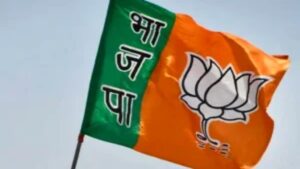Explained: What is the distinction between MLA and MLC, how they’re chosen, know all the things right here
3 min readNew Delhi: After the meeting elections in Uttar Pradesh, now the stir of the Legislative Council (UP MLC Election 2022) elections has intensified. Legislative council elections shall be held in UP on 9 April and outcomes shall be declared on 12 April. What is the distinction between Assembly and Legislative Council elections? What are the members of those two homes known as? What is the distinction between MLA and MLC? What is the tenure of each, what are the obligations on each of them? Many such questions come to our thoughts once we learn in regards to the elections to the Legislative Council. We are attempting to clarify the distinction between these two via this explainer.
perceive the essential distinction between the 2
The full type of MLA is Member of Legislative Assembly. Whereas the complete type of MLC is Member of Legislative Council. MLA is a member of the Legislative Assembly of a state. Whereas MLC is a member of the Legislative Council of a state. The minimal age to be elected as MLA is 25 years whereas the minimal age to be elected as MLC is 30 years. The MLA is instantly elected by the general public, whereas the MLC is not directly elected. The tenure of MLA is 5 years whereas the tenure of MLC is 6 years.
Only 6 states have Legislative Council
In all of the states of the nation the place the Legislative Assembly exists. On the opposite hand, the Legislative Council is in solely 6 states of the nation. These embody Uttar Pradesh, Bihar, Maharashtra, Telangana, Andhra Pradesh and Karnataka.
How are the members of the Legislative Council elected
The time period of a member of the Legislative Council is for six years. Minimum age needs to be 30 years to contest elections. One-third of the members are elected by the MLAs. Apart from this, one third members are elected by the members of Municipal Corporation, Municipality, District Panchayat and Kshetra Panchayat. At the identical time, 1/12 members are chosen by lecturers and 1/12 members are chosen by registered graduates. In UP, 38 out of 100 members of the Legislative Council are elected by the MLAs. At the identical time, 36 members are elected by the District Panchayat members, Kshetra Panchayat members (BDC) and elected representatives of the Municipal Corporation or Municipality underneath the native physique constituency. The Governor nominates 10 nominated members. Apart from this, 8-8 seats come underneath instructor’s election and graduate’s constituency.
Know the multiplication of seats within the Legislative Council
The Legislative Council consists of as much as a sure variety of members. Not multiple third of the members of the Legislative Assembly needs to be within the Legislative Council. For instance, if there are 403 Vidhan Sabha members in UP, then the UP Legislative Council can’t have greater than 134 members. Apart from this, it’s essential to have no less than 40 members within the Legislative Council. However, the standing of MLC is the same as that of MLA.
How are MLAs chosen?
An MLA (MLA) is elected from every area of the state as a public consultant. The variety of constituencies relies on the variety of voters, the MLA is elected solely after the voters solid their vote. Along with this, all of the MLAs current all these issues within the meeting to resolve all the issues of their respective areas, and work to take all of the schemes issued by the state authorities to the general public. Apart from this, attempt to clear up all the issues of the individuals.






